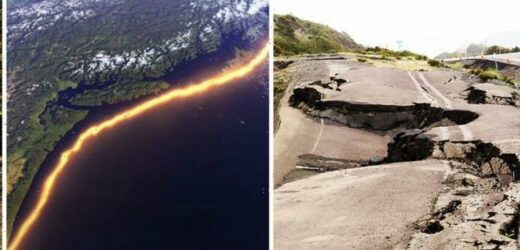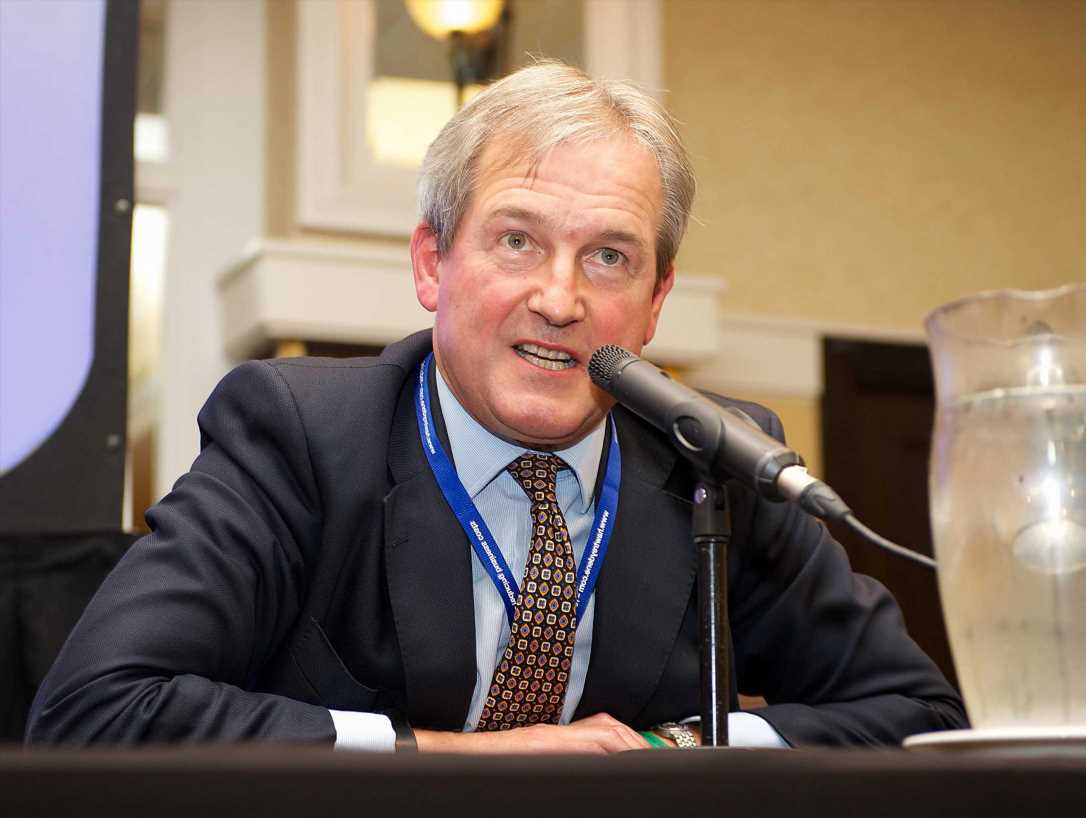California earthquake: 9% chance of 'the big one' reveals expert
We use your sign-up to provide content in ways you’ve consented to and to improve our understanding of you. This may include adverts from us and 3rd parties based on our understanding. You can unsubscribe at any time. More info
It has been centuries since the contiguous US, the entirety of the states, experienced a “Big One” — an earthquake with a magnitude greater than 9.0. The last on record was an earthquake in 1700 with an estimated magnitude of 9.0. This was along the Cascadia subduction zone where the Juan de Fuca plate is diving underneath the North American plate.
Huge earthquakes happen in this region because the plate that’s going down is usually oceanic crust, which is cold and dense, which means it can break in a sharp and sudden manner.
However, the cold dense crust that’s sinking can break for a much longer time and initially result in the seismic shifts and tremors.
The nature of the zone pairs any earthquake with another destructive event: a tsunami.
The earthquake that hit in 1700 sent a tsunami across the Pacific Ocean as far as Japan.


Researchers are now expecting another event at the Cascadia subduction zone, with the chances of it happening in the coming decades explored during NOVA PBS’ short documentary, ‘The Pacific Northwest is due for a Major Earthquake’.
Wendy Bohon, a geologist and senior science communication specialist at the Incorporated Research Institutions for Seismology, explained the process behind how a tsunami would result from an earthquake, and said: “You have one plate diving down beneath another, one section gets locked and it pushes another part up.
“When the fault ruptures, when the amount of stress overcomes the friction, it bounces back, which lifts up the water above it and causes that water to flow out in all directions.
“And that water flowing out in all directions in the tsunami.”
Oral histories of the earthquake and tsunami that hit in 1700 suggest many died from the event.
Water consumed much of the forestry and land near to the sea, destroying the native populations’ temporary homes.
However, back then, native Americans used the land differently to the colonisers, not building any permanent structures and constantly moving across the region.
Now, with a population of millions of people and structures designed to last, things are different.
JUST IN: Solar storm warning as ‘CANNIBAL’ blast from Sun turns skies blood-red

As the documentary’s narrator noted: “For communities along the coast at sea level, an earthquake and tsunami event could have a much bigger impact today than it did in 1700.”
The geological evidence shows that there are large earthquakes along the Cascadia boundary about every 300 to 500 years.
Which means we could be getting close to another “Big One”.
The Shoalwater Bay Tribe has already started preparations for an earthquake and tsunami, having applied for and received funding to construct a tsunami evacuation tower on their reservation.
However, many other tribes and people living in the ‘at risk’ areas are significantly underprepared.
Ms Bohon said: “We really need to be prepared for that eventuality, because it’s not a matter of if, it’s a matter of when.”
DON’T MISS
Covid warning: Experts baffled as ‘unusual’ Delta variant hits UK [REPORT]
Ancient Egypt breakthrough after discovery of prehistoric cemetery [INSIGHT]
Tsunami threat to UK ‘far more serious’ than scientists thought [ANALYSIS]


The crushing of plates at the Cascadia zone could cause nine metre tall waves.
These waves would have the potential to immediately kill 11,000 people in the states closest to the sea and injure a further 26,000, according to the Federal Emergency Management Agency.
Chris Goldfinger, a professor of geophysics at Oregon State University, has said the Cascadia zone is even more dangerous than California’s famous San Andreas fault.
In 2018, he told CNN: “Cascadia can make an earthquake almost 30 times more energetic than the San Andreas to start with, and then it generates a tsunami at the same time, which the side-by-side motion of the San Andreas can’t do.

“You’re going to have three to five minutes of shaking, and if you’re used to earthquakes in California, they typically last 15 to 30 seconds and before you are really sure of what is happening, it is over.”
Analysis in 2016 found that there were 43 major earthquakes in the past 10,000 years at the Cascadia zone.
These were often on the entire zone itself but sometimes on small parts of it.
Then, in November 2017, a study led by The University of Texas at Austin found that the occurrence of earthquakes and tsunamis may be linked to compact sediments along large portions of the subduction zone.

It found that there was more chance of a big, destructive quake off the shore of Washington and northern Oregon than further south along the subduction zone.
Lead author Shuoshuo Han said: “We observed very compact sediments offshore of Washington and northern Oregon that could support earthquake rupture over a long distance and close to the trench, which increases both earthquake and tsunami hazards.”
Source: Read Full Article


